In 'The Little Friend', the unsolved murder of Robin Cleave Dufresnes lingers over the story, drawing you into a web of suspicion and emotional turmoil. As you follow Harriet, Robin's sister, you'll see her relentless quest for truth amidst various theories about his death. Was it an accident, or did someone play a role? Key suspects like Danny Ratliff and Pem surface, each with shadows of motive. The story reveals the impact of grief and complex family dynamics, leaving you questioning the nature of innocence and guilt. Stay with it to uncover deeper mysteries entwined within their lives.
Overview of the Novel
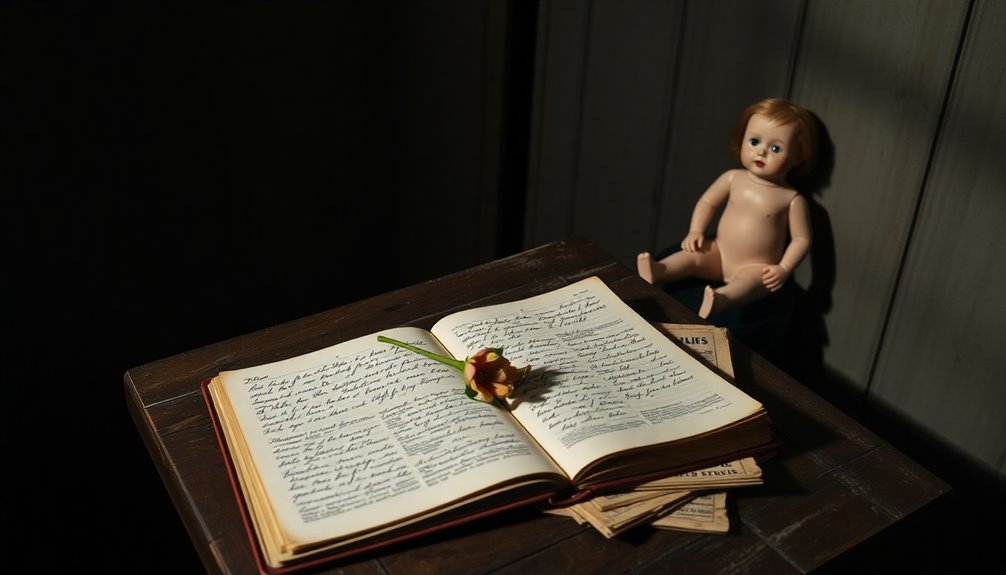
In "The Little Friend," Donna Tartt immerses you in the haunting atmosphere of 1970s Alexandria, Mississippi, where the unsolved murder of nine-year-old Robin Cleave Dufresnes looms large.
You follow Harriet, Robin's determined sister, as she sets out on a quest to uncover the truth behind his tragic death. The narrative dives deep into themes of childhood innocence and family dysfunction, painting a vivid picture of life in Alexandria. The dehumanizing effects of unresolved trauma echo throughout the community, influencing every character's actions and motivations. Tartt's exploration of shame's roots in familial relationships enhances the emotional depth of the narrative, illustrating the complexities of each character's motivations.
Tartt's rich prose brings the setting to life, allowing you to feel the weight of loss and the complexities of human relationships. While the novel spans 555 pages and showcases Tartt's remarkable writing, it leaves you pondering the unresolved nature of Robin's murder, adding layers to Harriet's relentless pursuit. The exploration of themes such as moral ambiguity reflects Tartt's signature style, inviting readers to engage with the darker elements of human nature.
Central Mystery of Robin's Death
In "The Little Friend," Robin's death raises numerous questions that keep you guessing.
You'll explore theories about potential suspects, consider the possibility of an accidental death, and examine the clues that shape the narrative. The resilience of the characters in confronting their demons parallels the courage of historical women, adding emotional depth to the story. The urban poverty depicted in the narrative serves as a backdrop that complicates the characters' motivations and decisions.
Each piece of evidence adds layers to the mystery, inviting you to uncover what really happened. The exploration of hidden stories enhances the intrigue and complexity surrounding Robin's demise.
Suspect Theories Explored
While investigating the tragic death of Robin, several suspects emerge, each with compelling motives and backgrounds that warrant scrutiny.
Pem, with his overlooked history and generous donations to Robin's family, raises eyebrows.
Then there's Danny, whose violent tendencies and troubled past make him a prime suspect in Robin's murder.
Ida Rhew's anger stemming from familial issues adds to her potential guilt, while some speculate that Harriet may have inadvertently played a role.
Clues like the heart-shaped candy box and Stetson hat hint at Roy Dial's involvement.
The lack of clear motives among the townsfolk complicates matters, forcing you to question the intricate community dynamics that could have influenced the tragic events leading to Robin's death.
Accidental Death Possibility
Although the investigation into Robin's death is fraught with suspicion, the possibility that it was an accident looms large.
Some readers theorize that Robin's death might've occurred during a game with friends, particularly during a superhero play that spiraled out of control. The narrative hints that he could've accidentally hanged himself while attempting a stunt, showcasing the unpredictable nature of childhood play.
With the townsfolk lacking a direct motive to harm Robin, the accidental death possibility gains traction. In addition, Danny's guilt and confusion suggest he might've been involved in an accidental incident that led to Robin's tragic fate.
This complexity adds a layer of depth to the mystery, leaving readers questioning the true nature of Robin's demise.
Clues and Evidence
The investigation into Robin's tragic death uncovers various clues and evidence that shift the focus of suspicion among the townsfolk.
Each piece adds complexity to the puzzle of Robin's murder, leading you to question the motivations of those involved.
- A Stetson hat found at Libby's bed hints at new suspects.
- A heart-shaped candy box owned by Edie suggests Roy Dial's inheritance motives.
- Dial's quote, "I am a voice of one crying out in the wilderness," raises red flags.
- The cedar chest linked to Libby hints at family inheritance conflicts.
- Prologue references imply Ida's potential guilt tied to past family dynamics.
As you piece these together, the web of relationships and secrets surrounding Robin's murder grows thicker.
Suspects Involved in the Case
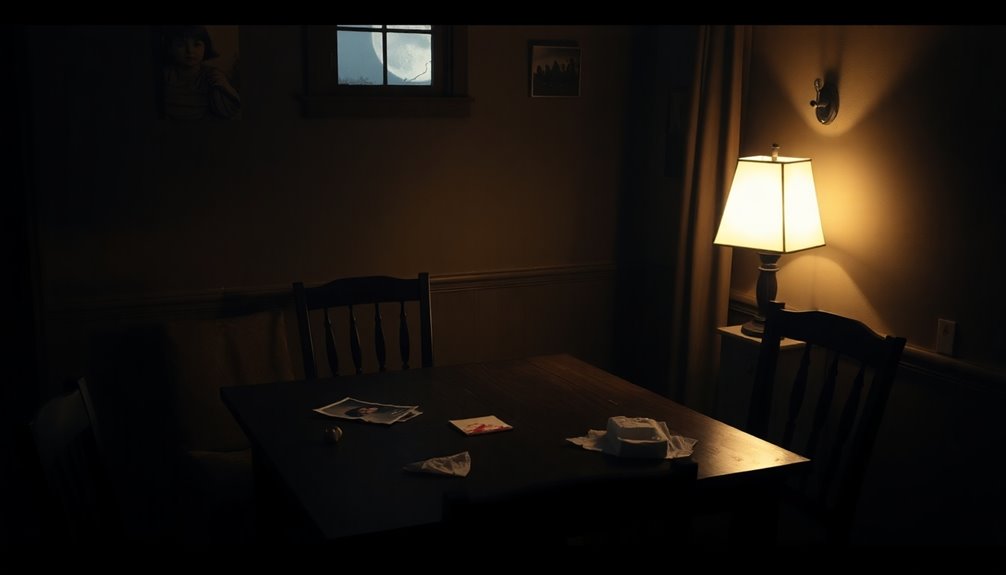
As you explore the suspects in Robin's death, you'll encounter a range of characters with complex motives and relationships. From Pem's questionable generosity to Danny's violent past, each individual raises important questions about their possible involvement. The narrative's exploration of human nature adds layers to each character's potential motives. Furthermore, the intricate plots and unpredictability of the story heighten the suspense surrounding each character's actions and intentions. Theories abound, suggesting everything from accidents to hidden resentments, making the investigation all the more intricate. The themes of betrayal and deception resonate throughout the investigation, mirroring the complexities of the Atwood family's dark past.
Potential Suspects Overview
In the shadow of Robin's tragic death, a handful of suspects emerge, each with tangled motives and hidden agendas.
As you sift through the evidence surrounding Robin's murder, consider these key figures:
- Pem: His generous donations to Robin's family and complex ties to Allison raise eyebrows.
- Danny: With a violent past and troubled family history, he stands out as a potential threat.
- Ida Rhew: Her bitterness towards Edie hints at deep-seated familial resentment.
- Theories of Accident: Could Robin's death stem from a reckless game involving Danny, Allison, and Harriet?
- Roy Dial: Inheritance motives and a heart-shaped candy box connect him to the case.
These suspects each carry their own weight in this unfolding mystery.
Motives Behind Actions
What drives someone to commit a heinous act? In the case of Robin's murder, motives run deep.
Pem, with his overlooked past and generous donations to Robin's family, raises suspicion—could guilt or complicity be behind his actions?
Then there's Danny Ratliff, whose violent tendencies and troubled family history make you wonder if he acted out of rage or unresolved emotions.
Ida Rhew, the maid, harbors bitterness towards the Ratliffs, suggesting past grievances might fuel her motives.
Finally, Roy Dial's connection to inheritance and the heart-shaped candy box hints at a deeper financial motive.
On a day typically filled with love, like Mother's Day, these suspects' actions reveal darker intentions lurking beneath the surface.
Theories of Involvement
While examining the theories of involvement in Robin's murder, several key suspects emerge, each with their own potential motives.
- Pem: His generous donations to Robin's family raise questions about guilt or complicity.
- Danny Ratliff: Known for his violent behavior towards Robin, his troubled past makes him a prime suspect.
- Ida Rhew: The family's maid harbors resentment towards the Ratliffs, potentially fueling her involvement.
- Accidental Death Theory: Could Robin's death have been a tragic accident during a childhood game with Danny and others?
- Roy Dial & J. Rhodes Sumner: Both may have motives linked to inheritance or property disputes, complicating the narrative further.
These theories highlight the complexity surrounding Robin's murder and the many layers of suspicion woven throughout the investigation.
Theories Surrounding Robin's Demise
How did Robin's demise become such a tangled web of speculation? Many theories swirl around the tragic event, with some suggesting that Robin was hanged accidentally during a game gone wrong, possibly involving Danny Ratliff, who feels deep guilt about it. This sense of guilt often stems from the complexities of past actions that resonate throughout one's life. In a similar vein, characters in *The Book Thief* grapple with the weight of their choices in a time of oppressive fear and moral ambiguity, showcasing the psychological toll of acts of defiance.
Others point to Ida Rhew, the family's maid, who harbors bitterness due to past grievances, making her a suspect. There's also the idea that the Ratliff family unintentionally contributed to Robin's fate while trying to save him from a tree. Additionally, Robin's fascination with escape acts, influenced by Houdini, hints at a self-inflicted accident. The lack of clear motives among the townsfolk adds to the confusion, leaving the true circumstances of Robin's death shrouded in mystery. This ongoing uncertainty mirrors the impact of small acts of defiance seen in historical contexts, where the truth can often become obscured in fear and speculation.
Clues and Evidence Discovered
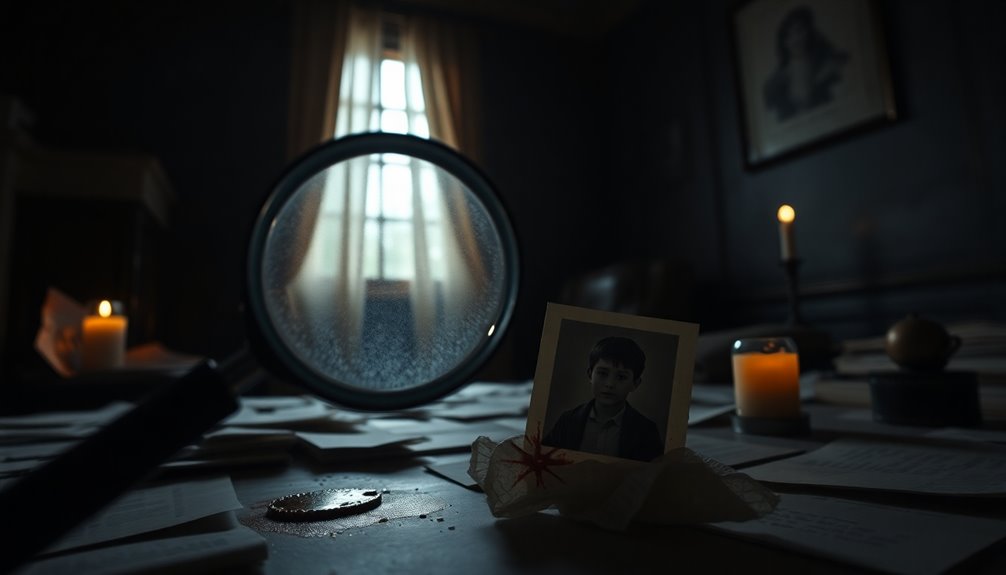
As the theories surrounding Robin's demise multiply, investigators uncover a series of clues and evidence that could shed light on the tragic event. Each piece seems to weave a complex narrative tied to Robin's death, leading you deeper into the mystery.
- A Stetson hat found at Libby's bed hints at possible connections to the crime.
- The heart-shaped candy box, a keepsake of Edie's, suggests Roy Dial's involvement in motives linked to inheritance.
- Dial's cryptic quote raises questions about his scheming nature.
- The cedar chest associated with Libby's estate hints at hidden inheritance motives.
- Prologue references subtly point towards Ida's potential guilt.
Additionally, the intricate plotting seen in historical mystery novels often mirrors the complex web of clues presented here, enhancing the overall narrative. Historical events, much like the mysteries in literature, often reveal the triumph of the human spirit in overcoming adversity. Furthermore, the social commentary woven into such narratives reflects the class struggles that resonate with contemporary audiences.
These clues and evidence discovered create a tangled web, leaving you keen for answers.
Character Dynamics and Relationships
Character dynamics in 'The Little Friend' reveal a web of intertwining relationships that complicate the investigation into Robin's death.
Pem's relationship with Allison is particularly scrutinized, as he seems to gather information about Robin while vying for her affection. Harriet's jealousy toward Pem adds tension, hinting at deeper emotional ties and motivations.
Meanwhile, Danny's violent past raises suspicions about his connection to Robin's demise, rooted in his troubled family background.
Carl Odum's relationship with his daughter highlights how familial dynamics influence behavior and community perceptions.
These character dynamics illustrate how memory and denial shape their present interactions, ultimately revealing the complex motivations that drive each character in the quest for truth.
Thematic Exploration of Innocence

Innocence serves as a fragile thread woven through the narrative of 'The Little Friend,' starkly contrasting with the violent realities that envelop the characters and their community.
You witness Harriet's journey, where her quest for truth shatters her childhood naivety, pulling her into a web of adult complexities.
The stark juxtaposition between playful innocence and the chilling specter of Robin's murder underscores the delicate balance between innocence and guilt.
- The haunting impact of trauma
- Childhood games with sinister undertones
- The reliability of childhood memories
- Nostalgia for lost innocence
- The harshness of adult realities
In each layer of the story, innocence slips away, revealing the irrevocable changes violence brings to a once-pure childhood.
Reader Reactions and Interpretations
While traversing the intricate narrative of 'The Little Friend,' you'll find that reader reactions vary widely, particularly regarding the unresolved nature of Robin's murder.
Some readers feel frustrated by the ambiguity, craving closure, while others appreciate it as a deliberate narrative choice.
Online discussions reveal a vibrant community where fans speculate on suspects and motives, analyzing character dynamics deeply.
Many emphasize the importance of re-reading to uncover subtle clues that inform their interpretations.
Speculation about character motivations, like Pem's relationship with Allison and Danny's guilt, showcases the rich analysis readers apply.
This interplay between mystery and character development invites varied reader reactions, prompting reflections on truth and the reliability of memory as you dive deeper into the story.
Author's Intent and Narrative Structure
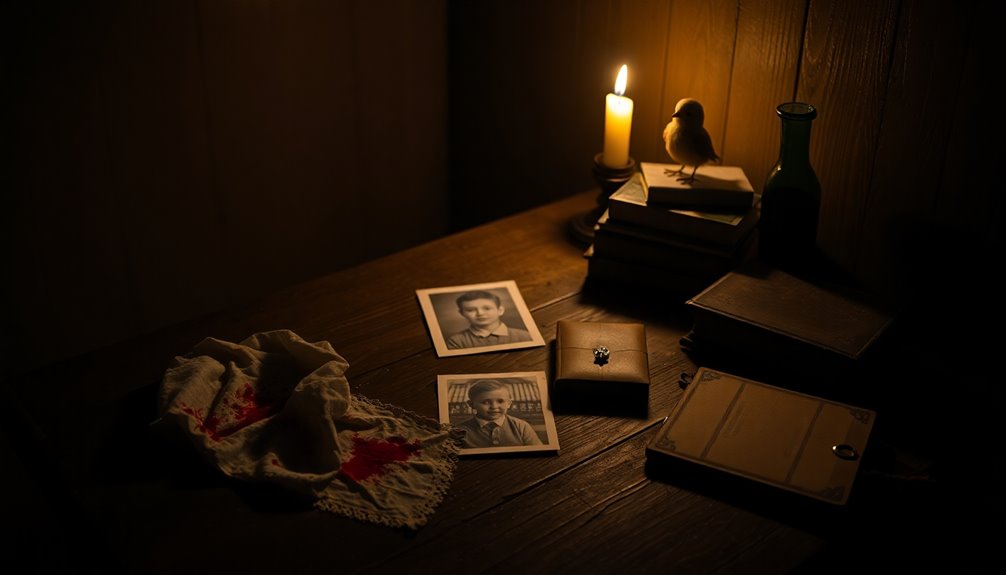
As you explore 'The Little Friend,' you'll notice that Donna Tartt's intent is to create a narrative that prioritizes the intricacies of human relationships over simply revealing the identity of Robin's killer.
- Clues are intricately woven throughout the story.
- The narrative employs multiple character perspectives.
- Emotional and psychological aftermath takes center stage.
- Readers are encouraged to interpret clues subjectively.
- The ambiguity enhances your engagement with the text.
Tartt deliberately leaves the killer's identity ambiguous, prompting you to investigate deeper into the emotional complexities.
Her narrative structure offers a panoramic view, emphasizing the varied interpretations of memory and truth.
Ultimately, the author's intent lies in exploring how tragedy influences relationships, inviting you to form your own theories.
Community Discussions and Speculations
Community discussions surrounding 'The Little Friend' reveal the myriad theories readers have formed about Robin's death.
You'll find debates about whether it was an accidental hanging during a game or if suspects like Pem and Ida played a role. Many conversations plunge into the emotional turmoil characters face, especially Danny, who grapples with guilt over Robin's fate.
Clues like the stetson hat and heart-shaped candy box spark speculation on possible motives. The mystery's lack of resolution frustrates some, while others appreciate the ambiguity, prompting deeper explorations of truth and perception.
Platforms like Goodreads serve as hubs for these community discussions, allowing you to share interpretations and insights on the complex dynamics surrounding Robin's tragic end.
Analyzing Harriet's Role
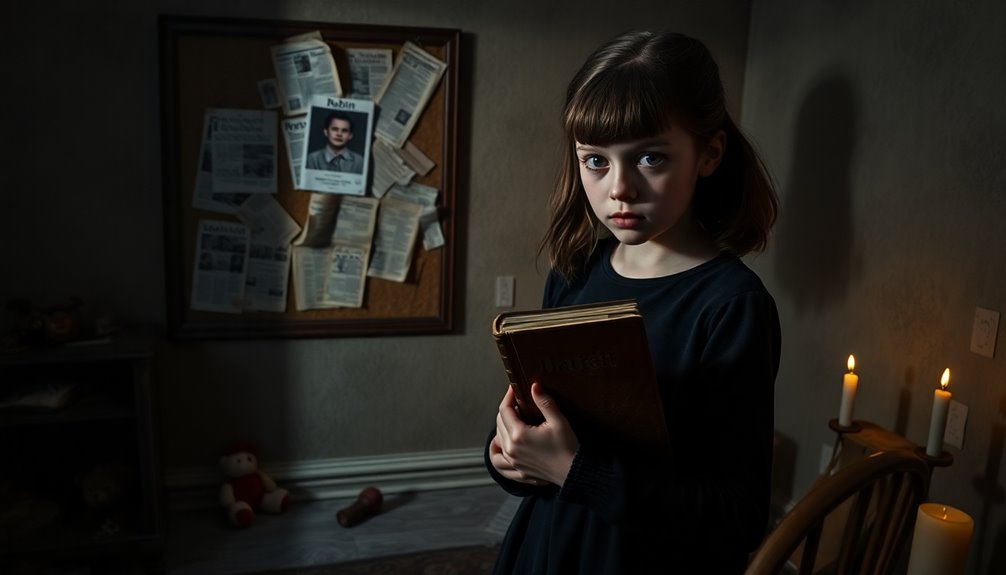
Determination fuels Harriet's journey as she steps into the role of investigator, driven by the unresolved murder of her brother Robin. As you follow Harriet, you'll witness her emotional turmoil and the impact of grief that shapes her quest for truth.
- She navigates complex family dynamics.
- Harriet gathers clues from potential suspects like Danny and Ida.
- Her persistence underscores a longing for closure.
- The investigation reveals the darker aspects of childhood.
- Harriet's character development explores innocence lost.
Ultimately, Harriet's journey leads to an ambiguous conclusion, emphasizing the complexities of truth and unresolved grief.
Through her eyes, you experience the haunting legacy of Robin's death and the impact it has on her life and relationships.
Impact of Class and Prejudice
While traversing the haunting landscape of Alexandria, Mississippi, you quickly realize how deeply class disparities shape the lives of its residents in 'The Little Friend.'
The stark contrast between the affluent Dufresnes and the struggling Ratliffs highlights the social hierarchies that dictate relationships and influence motives.
Gossip within the community reflects class prejudice, shaping perceptions and impacting the investigation into Robin's death.
The differing backgrounds reveal the harsh realities of socioeconomic inequality, where the Dufresnes wield power and privilege, while the Ratliffs face marginalization.
Racial undertones further complicate these dynamics, adding layers of historical tension.
This juxtaposition of innocence and guilt within class struggles amplifies the emotional weight of childhood trauma, revealing how deeply entrenched biases affect interpersonal connections and community interactions.
Emotional Depth and Character Development

In "The Little Friend," you see how complex family dynamics shape each character's emotional depth and responses to trauma.
Harriet's relentless pursuit of the truth about her brother's death reveals the heavy weight of grief that influences her actions and relationships.
As you explore these characters, you'll witness how childhood experiences mold their identities and drive their motivations in profound ways.
Complex Family Dynamics
As you explore the complexities of family dynamics in 'The Little Friend', you'll find that Harriet's relentless pursuit of truth surrounding her brother Robin's death exposes the emotional turmoil within the Dufresne family.
The story reveals how grief fractures relationships and highlights the dysfunction that lingers post-tragedy.
- Harriet's strained relationship with her mother, Edie
- Pem's scrutiny of Allison and its implications
- Harriet's jealousy towards Pem and its roots
- Ida Rhew's bitterness reflecting her own past traumas
- The lasting effects of Robin's death on family identity
Through these interactions, you witness how unspoken family secrets and emotional wounds shape the Dufresnes, painting a vivid picture of complex family dynamics.
Childhood Trauma's Influence
Childhood trauma casts a long shadow over the characters in 'The Little Friend', profoundly influencing their emotional landscapes and development.
You see how Harriet's relentless pursuit of the truth about Robin's murder stems from her unresolved grief. This fixation shapes her identity, pushing her to confront the chaos left in the wake of loss.
The interactions between Harriet and Danny reveal their shared guilt and confusion, showing how memories of Robin haunt their every move. As they navigate their relationships, the trauma subtly influences their choices and perceptions of safety.
The intertwining themes of innocence and nostalgia remind you that this trauma doesn't just fade; it lingers, shaping their reality and complicating their understanding of trust within their community.
Final Thoughts on the Mystery
Unraveling the mystery in 'The Little Friend' leaves you with more questions than answers, a demonstration of Donna Tartt's masterful storytelling. The ambiguity surrounding Robin's killer enhances the narrative's depth, inviting you to explore various theories and suspects.
- The complexity of Robin's death reflects deeper familial tensions.
- Each character, from Pem to Ida, presents a unique motive.
- Clues like the Stetson hat engage you in piecing together the mystery.
- Reader interpretations vary, emphasizing the joy of re-reading.
- The emotional aftermath highlights that the quest for truth can be more significant than the truth itself.
Ultimately, the unresolved nature of the mystery invites you to ponder the intricacies of human relationships and the impact of trauma.
Conclusion
In the end, you're left with a haunting echo of Robin's untimely demise, much like a ghost that lingers in the shadows of the bayou. The mystery unfolds like a tattered map, revealing not just the culprits but the dark undercurrents of society. As you close the book, you can't help but feel Harriet's relentless pursuit of truth, a modern-day Nancy Drew maneuvering through a world riddled with secrets and silence, forever changed by a tragedy that refuses to fade.



